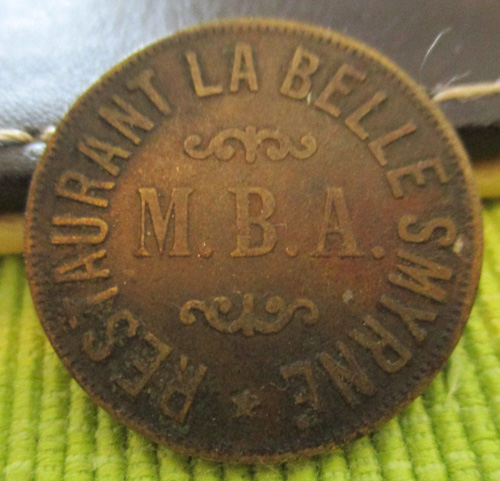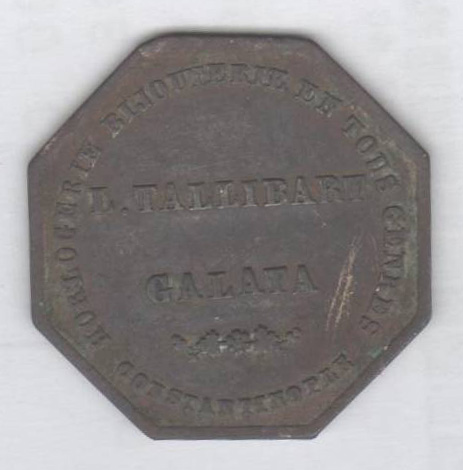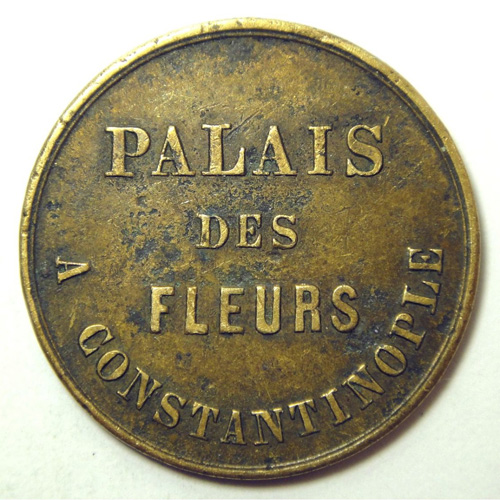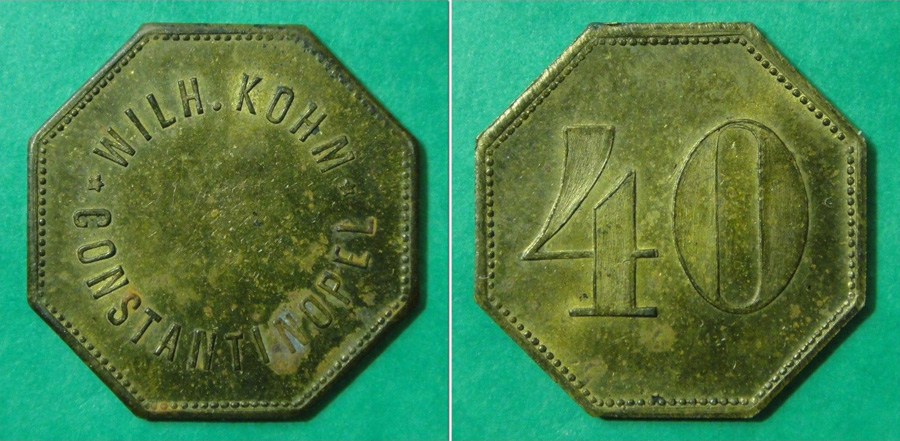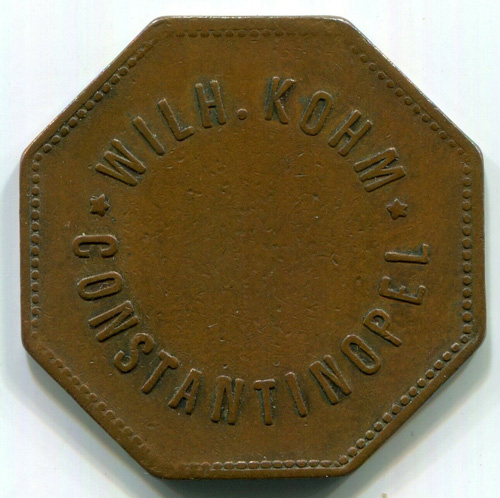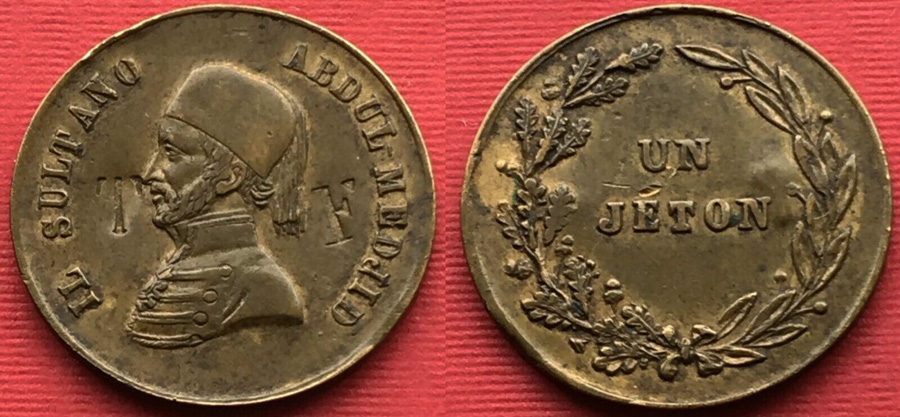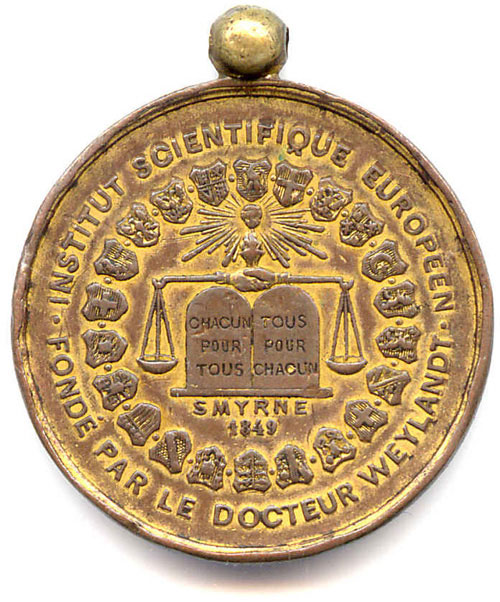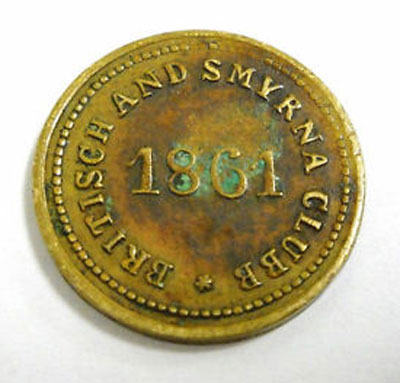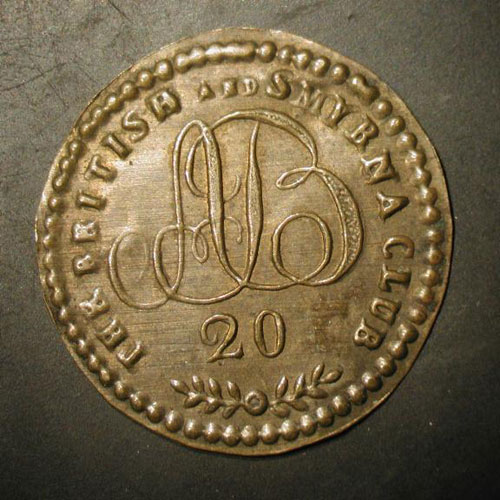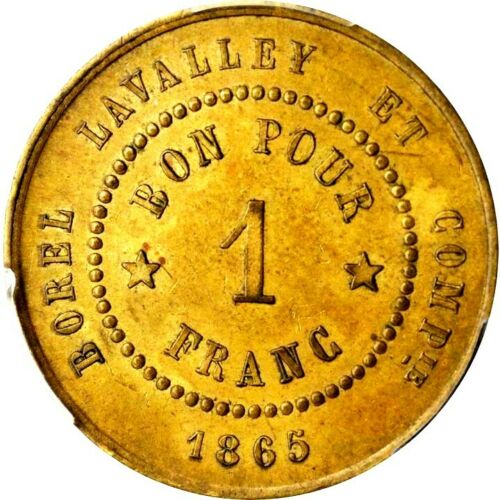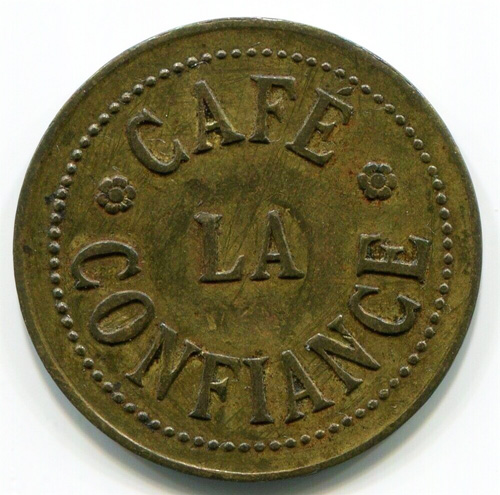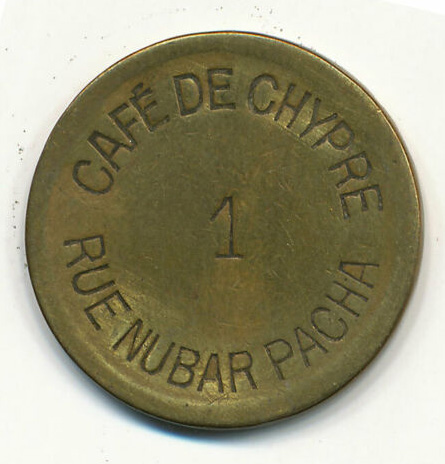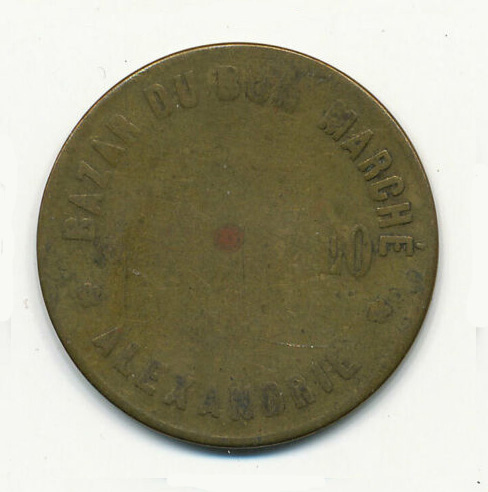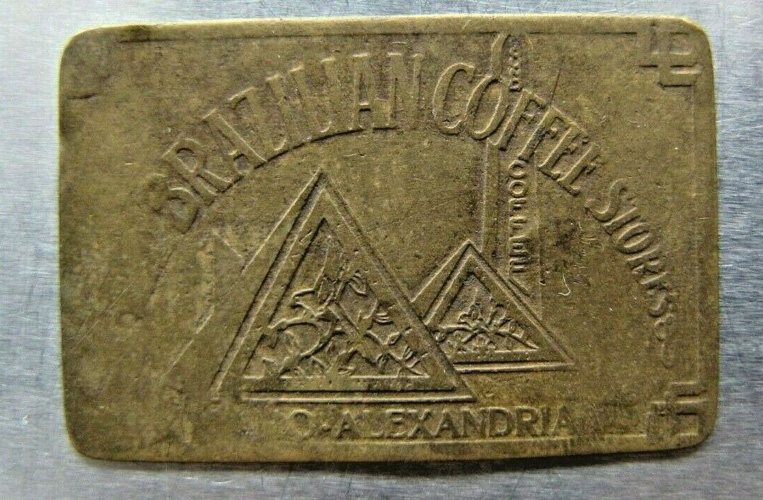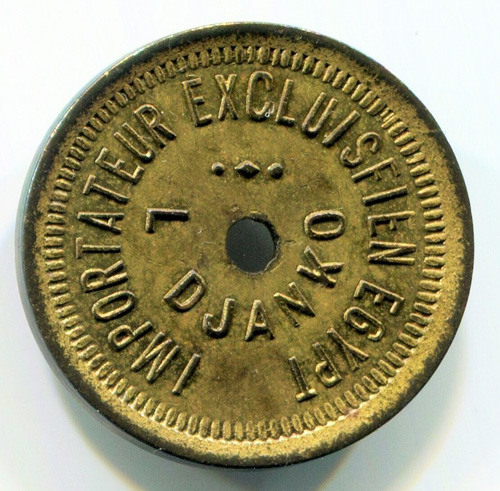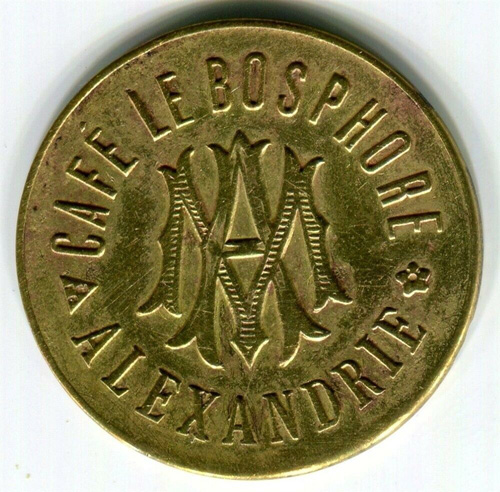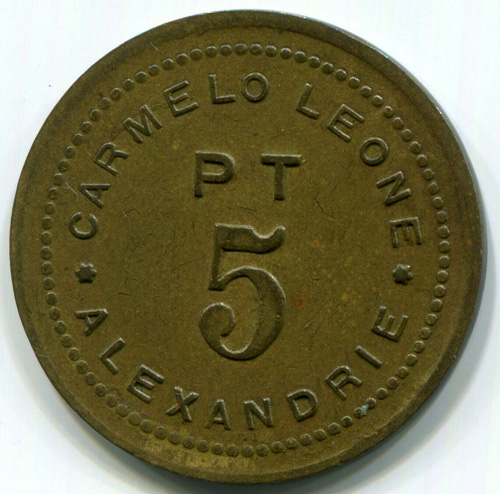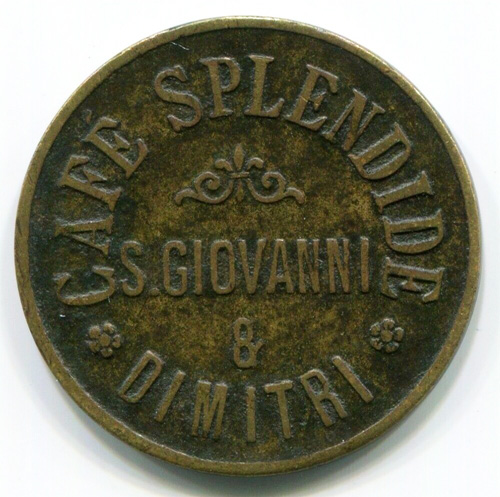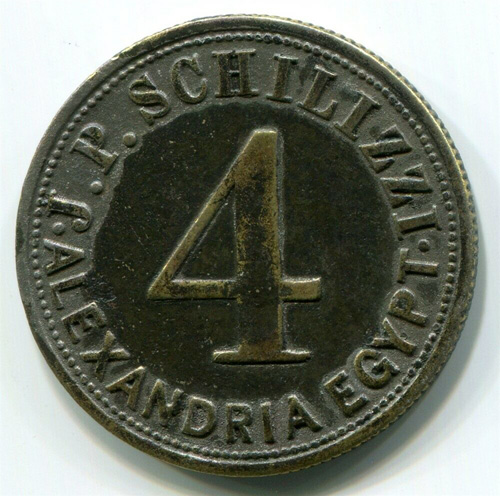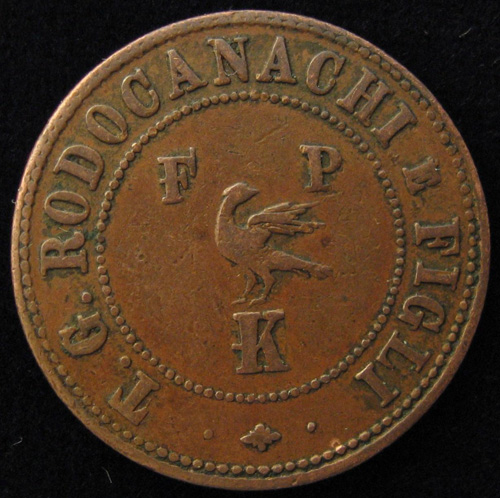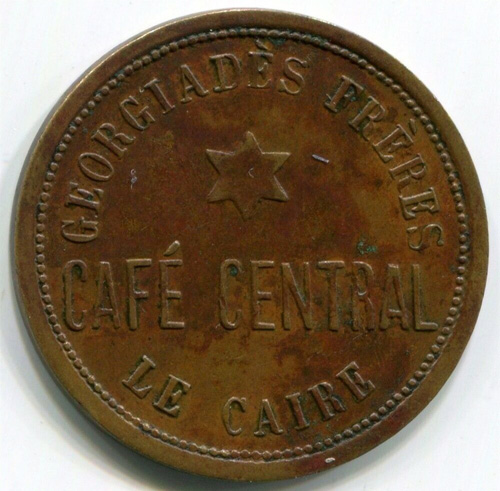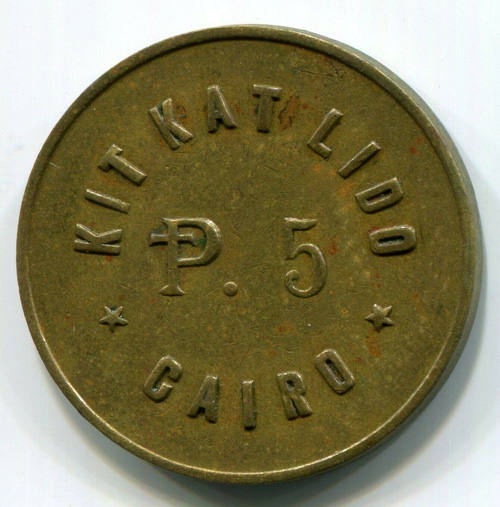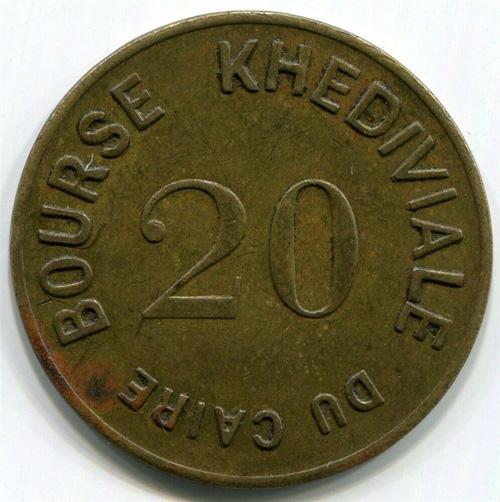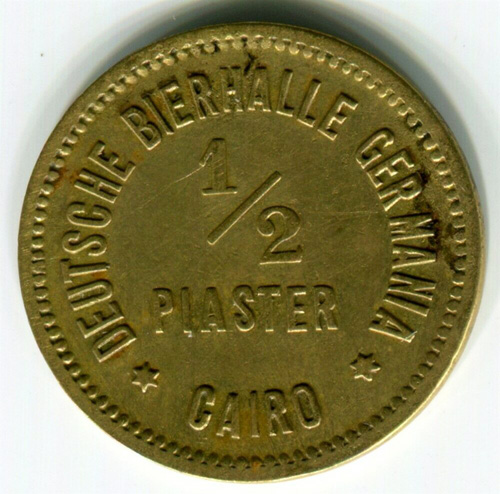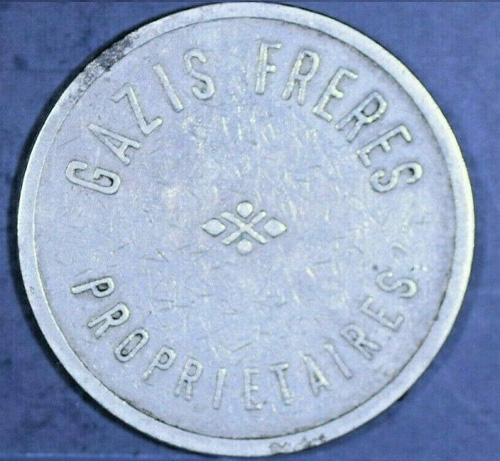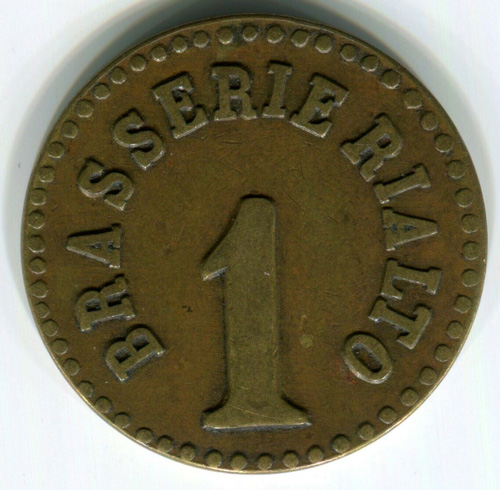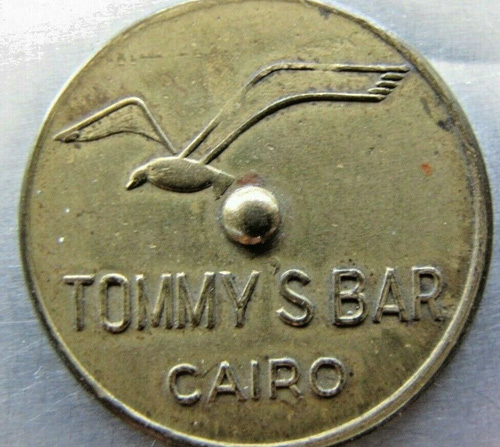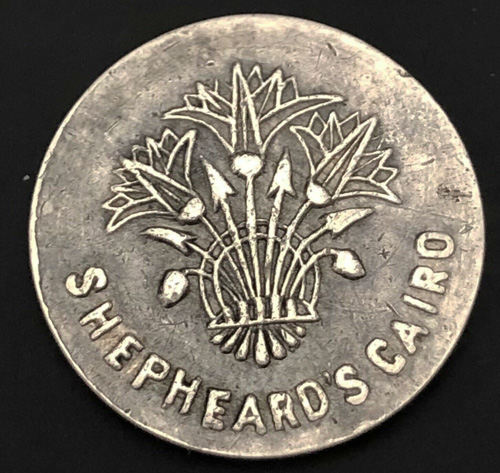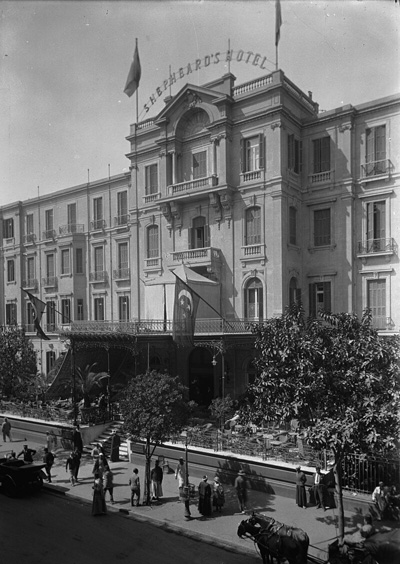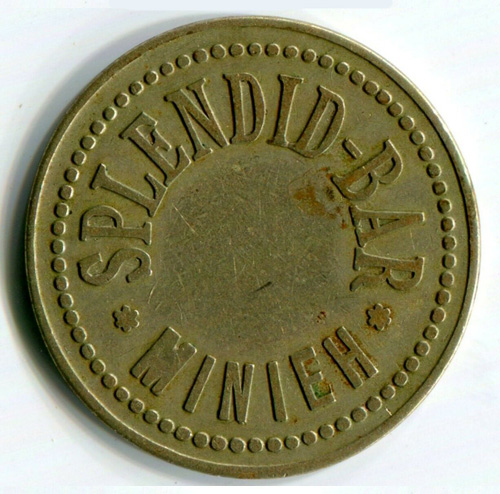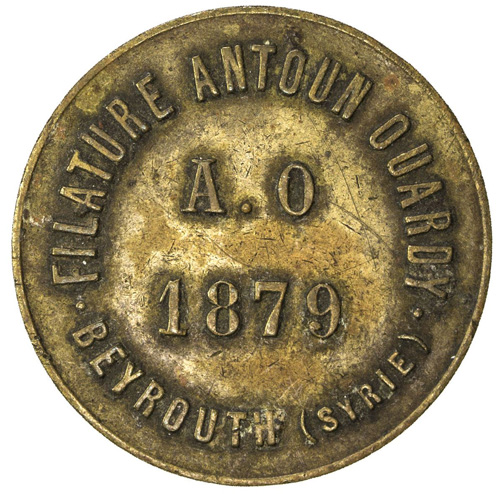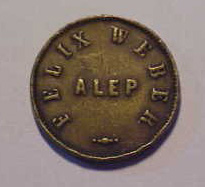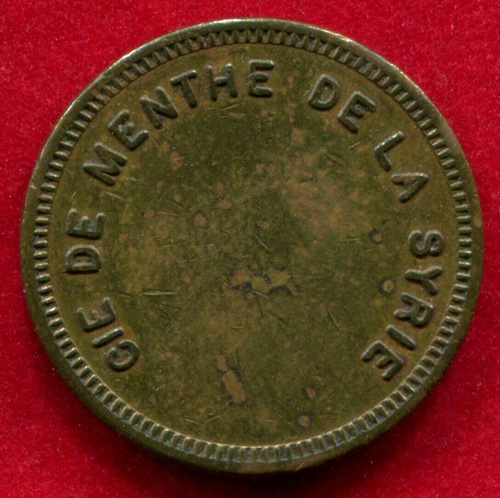
Ephemera
Trade / Club tokens / Commemoration medals
Token coins or trade tokens are coin-like objects used instead of coins. Tokens have a denomination either shown or implied by size, colour or shape. ‘Tokens’ are often made of cheaper metals such as copper, pewter, aluminium, brass and tin. A key point of difference between a token coin and a legal tender coin is that the latter is issued by a governmental authority and is freely exchangeable for goods. However, a token coin typically has a much more limited use and is often issued by a private company, group, association or individual. This commercial practice (excluding casinos) is now mostly relegated to history and seems to have had 2 primary purposes: advertise and promote trade or extend credit to customers, so the token would also act as a reminder of a commercial debt to be paid back.
Constantinople
Trade token from the French Levantine clock/watch-maker Tallibart, based in Galata, from the 19th century. Further information on this shop gleaned through the book: ‘Three years in Constantinople; or, Domestic manners of the Turks in 1844’ - Charles White, Esq - ‘From the absence of bells and clocks to indicate the hours, there is no city where watches are more requisite than in Constantinople. Should the traveller desire to regulate his own watch, or to purchase one of those worn by the Turks, he can take advantage of the vicinity to consult Mr. Tallibart. Watchmakers abound in Galata and Pera, but none can be compared to this skilful artizan, whose shop is situated in the second lateral street below the Thursday-market, and immediately south of Yeny Djamy (new mosque)’.

This anniversary medal struck by the Italian Levantine community of Istanbul was for the 50th anniversary of the death of the Italian patriot, Alessandro Manzoni, showing the degree of organisation of the local Italian worker’s party.
A mysterious token, perhaps a florist shop in Constantinople.
Wilhelm Kohm was possibly a German / Austrian (?) owned shop in Constantinople, available in various denominations. The bottom token over-write suggests this business was taken over by another person, Stutzmann.
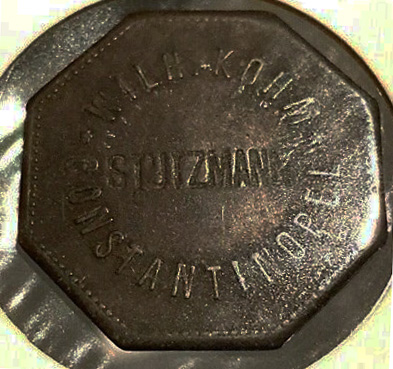
A mystery token but the Italian / French suggests it is from the Ottoman environment, perhaps a pro-Sultan Club who reigned between 1839-1861.
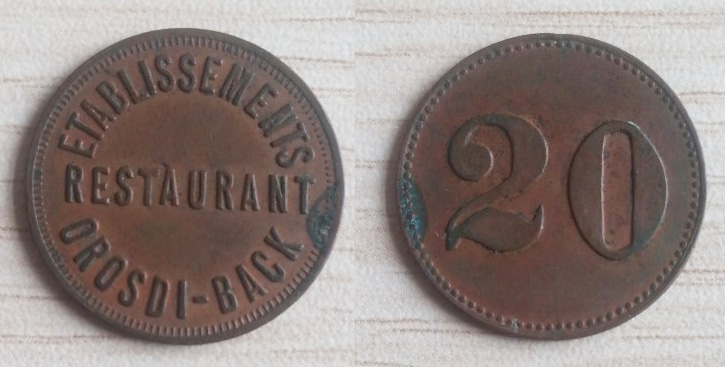
Orosdi-Back were a trading company which ventured into the new business opportunities of the Middle East from the mid-19th century onwards. The partnership families Orosdi & Back were Austrian / Hungarian / Jewish in origin and they became best known for their department stores in Istanbul, Cairo, Beirut, Tunis and Baghdad. Adolf Orosdi, a Hungarian army officer, who had found refuge in the Ottoman Empire, opened a first clothing store in Galata in 1855. With the Back family, equally of Jewish Austro-Hungarian descent, Orosdi and his sons began establishing similar stores elsewhere. This meal token presumably meant for the department store employees to be used in their meal breaks in the ‘in-house’ restaurant could have come from any of these centres or beyond, and indeed the lack of location text may indicate a standardisation of one the first truly global retail chains.
Smyrna
Probably a trade token, possibly from Cafe Eden, Smyrna waterfront.
Bronze US Navy Medal for Duncan Ingraham. Designed by S. Eastman, obverse sculpted by Peter Cross, reverse sculpted by James Longacre. Obverse design: ships St. Louis and Hussar in Smyrna harbour. The text reads: ‘Presented by the President of the United States to Commander Duncan N. Ingraham as a testimonial of the high sense entertained by Congress of his gallant and judicious conduct on the 2nd of July 1853. Joint resoluton of Congress August 4th 1854’. In July, 1853 Captain Duncan Nathaniel Ingraham, while in command of the sloop-of-war St. Louis in the Mediterranean, interfered with the Austrian consul’s detention of Martin Kosztca, a Hungarian who had declared in New York his intention of becoming an American citizen. On 2 July 1853 at 8am, Ingraham demanded the release of Koszta within 8 hours or he planned to attack, eventhough the St. Louis was much smaller and out gunned by the Austrian war-brig Hussar. The Austrian consul agreed to release Koszta into the custody of the French Consul. The French held the Hungarian until the US and Austrian consuls agreed to his disposition and he was released. For his conduct in this matter he was voted thanks and a medal by Congress.
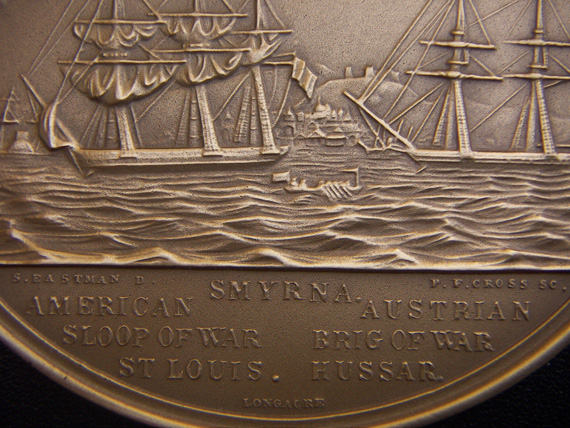
‘The European Scientific Institute’ was founded in Smyrna in 1849 and re-established in Paris in 1877, a bronze commemorative medal. Example below presumably showing the name of the member as it is indicated as ‘awarded to’.
The incorrect spelling on this token clearly indicates this club was not established by the British community of Smyrna but perhaps those aspiring to Levantine status and ‘20’ probably refers to a monetary value, possibly exchangable against drinks at the bar? Below another edition of this token perhaps a later version as the spelling is now corrected.
Suez
This token was issued by Borel & Lavalley Company, an engineering firm and contractor to the Suez Canal Company. Frenchman Ferdinand de Lesseps and his Suez Canal Company built the canal between 1859 and 1869. Paul Borel and Alexandre Lavalley formed their company in December 1863. Graduates of a polytechnic school, both worked in the railway industry before joining the canal project. An estimated 74 million cubic meters of material was excavated for the main canal, and Borel and Lavalley handled more than 75 percent of it. The company issued trade tokens, presumably for workers to buy provisions at the company store. Tokens were good for 20 cents, 50 cents, 1 Franc, or 5 Francs. The 5 Franc pieces are the most rare.
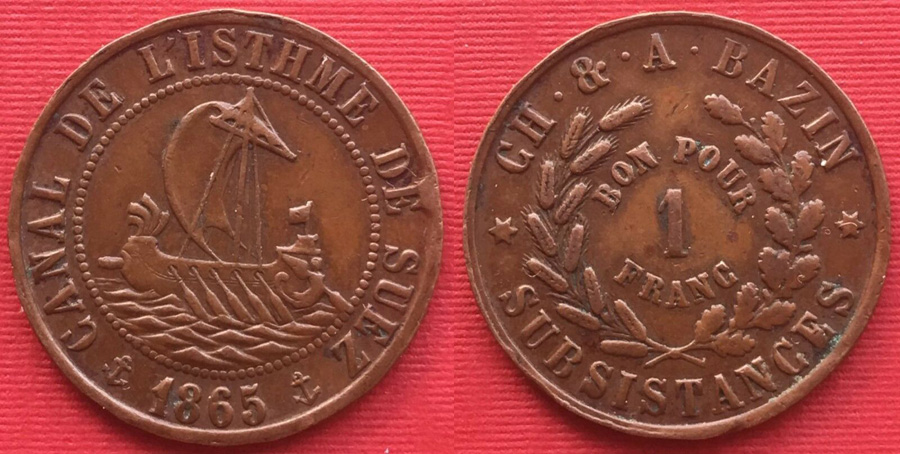
Presumably another meal token by a rival Suez canal construction company issued in the same year. In 1867, suction dredgers designed by French engineer Henri-Émile Bazin were used in the construction of the Suez Canal. From then on, dredging by suction became more and more common.
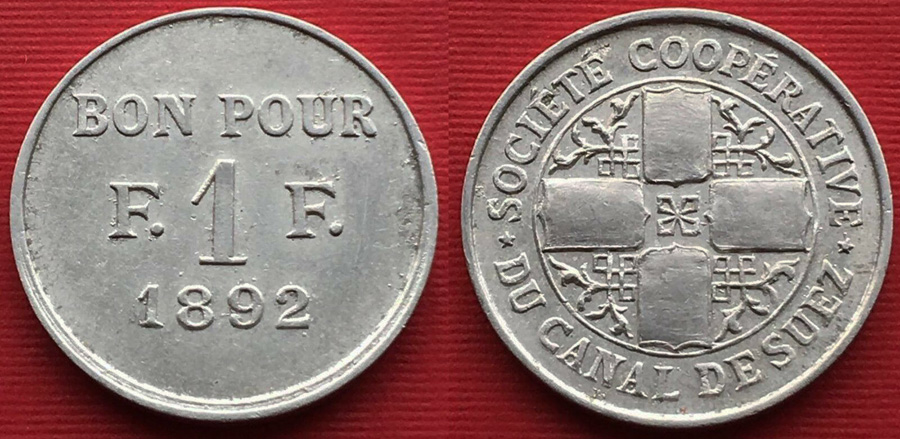
Alexandria
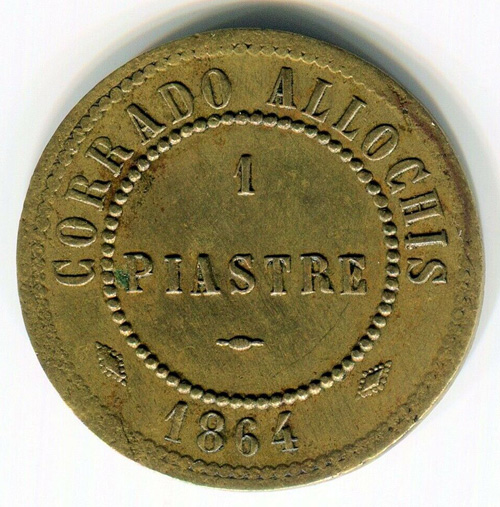
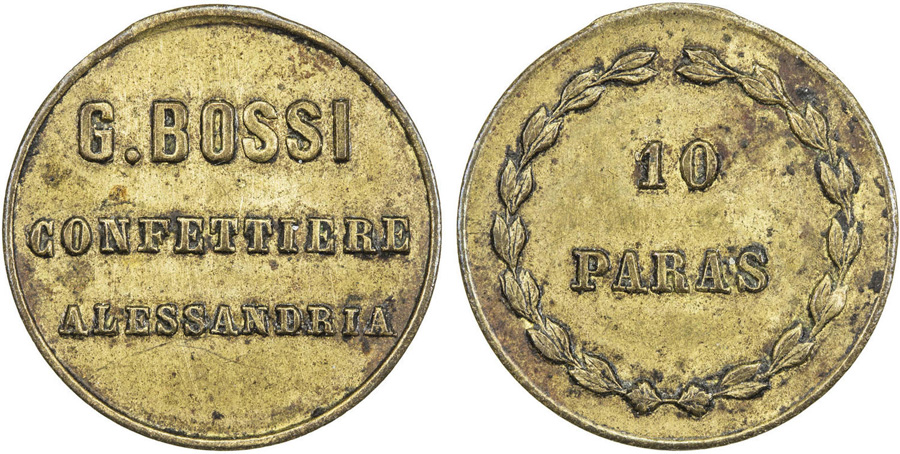
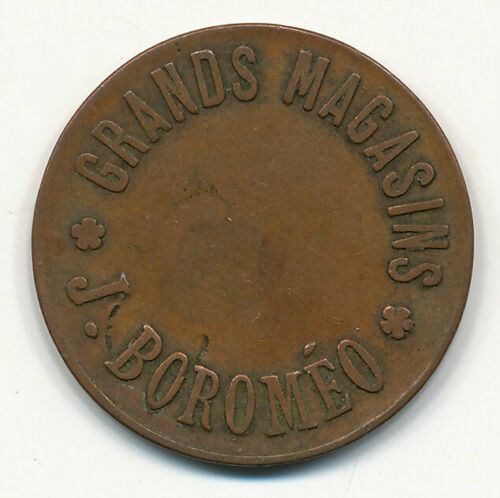
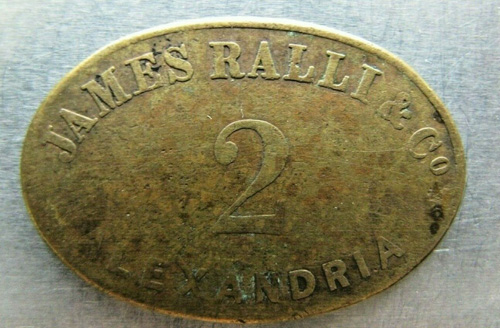

A medal for an international philanthropic society in Alexandria.
Token for Festa della Repubblica (Republic Day) which is the Italian National Day and Republic Day, which is celebrated on 2 June each year, with the main celebration taking place in Rome. The Festa della Repubblica is one of the national symbols of Italy. 1861 is probably not the issue date of this token but is the date of the Italian unification, though that is celebrated on the 17th March. Circolo Roma is the Italian cultural association active in many parts of the world including in Alexandria, Egypt which had its large population till 1956.
Cairo
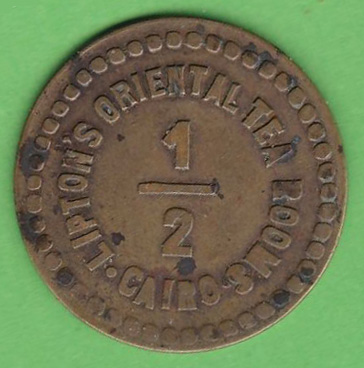
A background note in the novel “Miramar”, written in 1967 by famous Egyptian author Naguib Mahfouz, gives a clue to the location of the Lipton’s Oriental Tea Rooms. It states that “Lipton Gardens”, which no longer exist, had been a tea-garden in the area between Shepheard’s Hotel and the Kasr el-Nil Barracks.
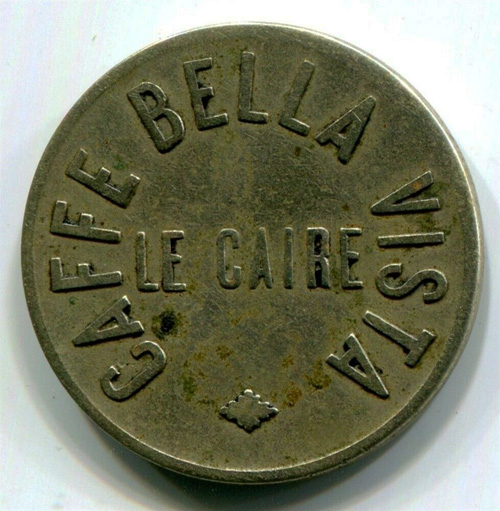
In “I Spied Spies”, Alfred William Sansom’s 1965 book, recounting British counterespionage in Cairo, the author mentions a “Calomiris” (by surname only) and details him as having been the Greek owner of the “Kit Kat”. Further of this man, Sansom wrote: - “He was very rich, rumoured to be one of Egypt’s numerous wartime millionaires. He owned the Kit Kat cabaret, the smartest nightclub in town.” According to publications of 1948 and 1949, relating to the Egyptian Federation of Industry, Mr G. Calomiris was one of two vice-presidents of the Federation of the Egyptian Hotel Industry. The other was Albert Metzger, the owner of the luxurious Cecil Hotel in Alexandria, Egypt’s second city. It would seem that G. Calomiris was also the owner of the Kit Kat Club (including the lido). The presence of an entwined “GC” monogram on the Kit Kat Lido tokens is an important part of this evidence. The Kit Kat Club was located a little north from where Sudan Street reaches the main road along the west bank of the river Nile. That large junction is called Kit Kat Square and is situated at the southern-most corner of Kit Kat suburb, within Cairo’s Imbaba district. Both suburb and square take their name from the old club.
Below the promotional card / postcard for the “Meeting point for all Germans in Cairo”, whose hotel and Bavarian beer hall offered German cuisine at cheap prices and good service, run by August Gorff - view of a similar German run establishment (Cairo’s Aristomene Brewery and Restaurant in 1911).
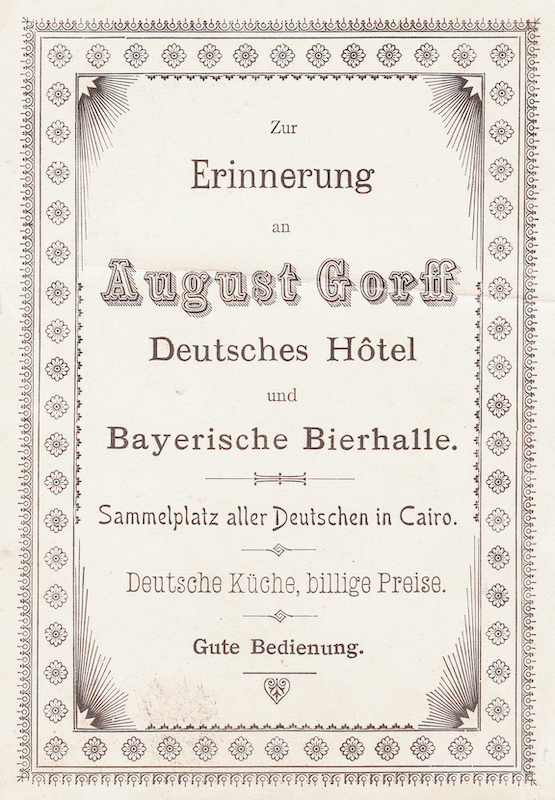


Evangelos Tseppas was of Greek origin and founded “Tseppas” in 1912. ‘Mill’ is an abbreviation for the denomination 5 Milliemes. The Millieme was a tenth of a Piastre and therefore a thousandth of an Egyptian Pound. It had been introduced as part of Egypt’s currency reform of 1888 and was also then used for denominations on Egyptian postage stamps. In “The Vanished World of Egyptian Jewry” published in the March 1994 edition of “Judaism: A Quarterly Journal of Jewish Life and Thought”, Victor D. Sanua, a Jew born in Egypt in 1920, recalls Tseppas as being a famous pastry shop on Fuad Street. Sanua had lived in Egypt until 1950; Tseppas had been a favourite place of his to get a cake. These days in Cairo there is still a business of this type named “Tseppas”.

A different more stylized version of the Tseppas patisserie token.
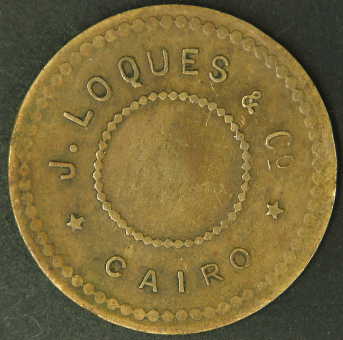
In two different Cairo guides (from around 1954 and 1960) there had been a “Loques” tea rooms at 10, Soliman Pasha Street. This street is now called Talaat Harb Street and is in Downtown, Cairo.
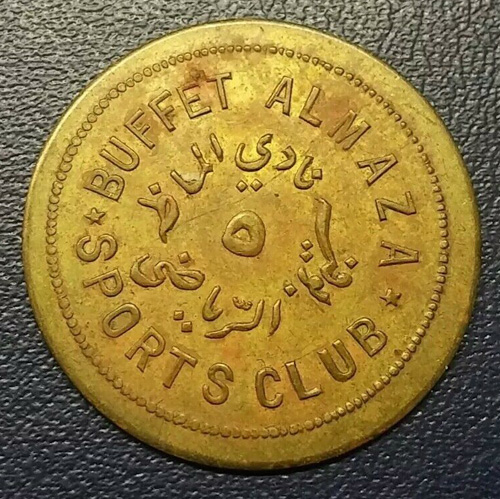
Not a trade but a ‘spinner token’, so acting as a promotional ‘keep sake’.
Not a trade but a promotional ‘keep sake’ token in silver presumably for the party guests of Christmas 1944. The hotel was originally established in 1841 by Samuel Shepheard under the name ‘Hotel des Anglais’, and was later renamed ‘Shepheard’s Hotel’. Shepheard’s Hotel was the leading hotel in Cairo and one of the most celebrated hotels in the world from the middle of the 19th century until its destruction in 1952 during the Cairo Fire. Five years after the original hotel was destroyed, a new one was built nearby and was named the Shepheard Hotel.
Minya, Egypt
Kafr-El-Dawar, Egypt
Medina, Arabia
Beirut
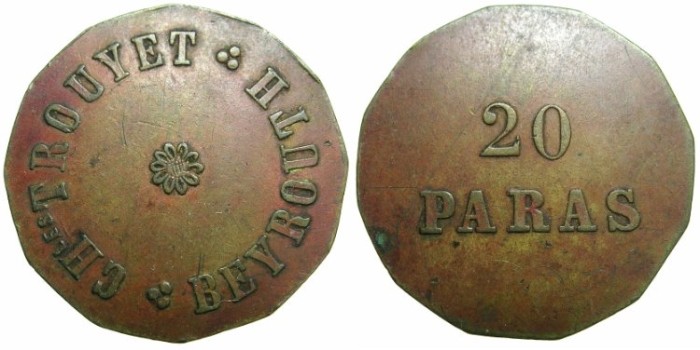
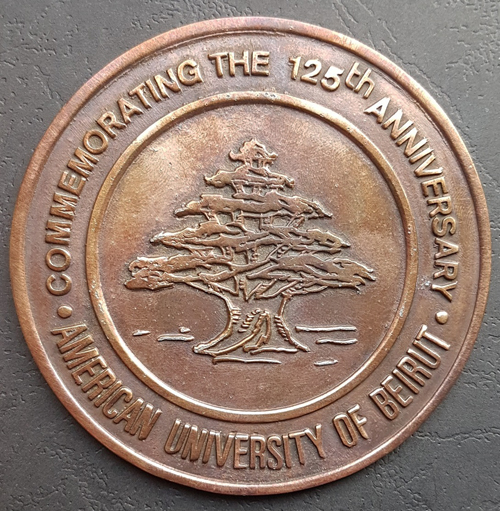
1992 medal commemorating 125th anniversary of the establishment of the American University of Beirut
Syria
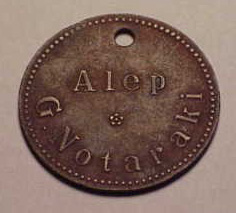
Salonica ?
